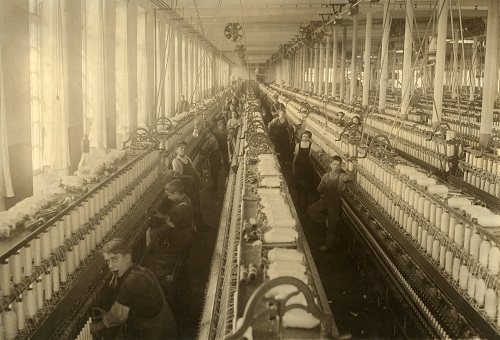
Three Important Milestones in the History of Workplace Safety
The Industrial Revolution transformed the U.S. economy and redefined the nation’s workplace health and safety laws. Machinery and industrial processes that accelerated production and output had the sobering side effect of putting workers at greater risk of injury, or even death, due to unsafe working conditions.
Three notable health and safety milestones emerged from the Industrial Revolution, which fundamentally shaped the modern workplace:
Employers Liability Law
In 1908, Congress enacted the Federal Employers Liability Act (FELA) in response to the rapid expansion of the nation’s railway network and increasingly dangerous conditions for railroad workers. Because of FELA, for the first time in the United States, employers could be held liable when workers were injured or killed on the job. Under FELA employers were also responsible for providing compensation to injured workers or their surviving family members. Unlike the no-fault workers’ compensation insurance system that followed it, FELA required injured workers to prove employer negligence to receive benefits.1
Introduction of Workers’ Compensation
Workers’ compensation insurance was invented in Germany in 18702 and spread throughout other European countries in the late 19th century. The first comprehensive workers’ compensation law in the United States was passed in Wisconsin in 19113, but it wasn’t until 1948 that workers’ compensation insurance became available in all states.4 The modern system5 helped injured workers receive medical attention, as well as wage replacement benefits.
Today, workers’ compensation insurance is regulated by the states6, and most business owners are required to provide coverage to employees. Business owners can obtain coverage from a private insurance carrier, like EMPLOYERS®, which operates in 36 states and the District of Columbia.
Establishment of Safety Agencies
In an ongoing effort to promote workplace health and safety, many government agencies and non-government partners were established throughout the 20th century7 to monitor workplace safety and enforce compliance. Three important ones include:
- The US Department of Labor8 (DOL) provides resources to support the U.S. workforce – from job seekers to retirees. The DOL establishes wage standards and provides resources and training for unemployed people.
- The Occupational Safety and Health Administration9 (OSHA), a part of the DOL, was established in the 1970s to enforce the Occupational Safety and Health Act10, which “assure[s] safe and healthful working conditions for working men and women by authorizing enforcement of the standards developed under the Act.” OSHA sets standards and enforces policies that keep workers safe and healthy. It also provides training, outreach, education and signage to help businesses stay in compliance.
- The National Safety Council11 (NSC) promotes health and safety with the goal of eliminating preventable death in the workplace and home. This non-governmental, non-profit, member-driven organization includes laborers, businesses as well as other private and public organizations and agencies.
Workplace safety requirements are continuously evolving12 to address the needs of America’s changing workforce. Today, it’s not the Industrial Revolution, but the Digital Revolution, that is driving change in workplace health and safety. To stay current on today’s workplace health and safety issues, talk with an insurance agent or carrier. They can offer practical information and resources to help keep workers safe.
1. Gaspar A. Corso, How F.E.L.A. Became Liability without Fault, 15 Clev.-Marshall L. Rev. 344 (1966)
2. Jack J. Burriesci, Historical Summary of Workers’ Compensation Laws, OLR Research Report
3. Workers Compensation Brief History, State of Wisconsin, Department of Workforce Development
4. Gregory P. Guyton, A Brief History of Workers’ Compensation, Iowa Orthop J. 1999; 19: 106–110
5. Gregory P. Guyton, A Brief History of Workers’ Compensation, Iowa Orthop J. 1999; 19: 106–110
6. Workers’ Compensation Law – State by State Comparison, National Federation of Independent Business
7. Safety Timeline, OSHonline.com
9. Occupational Safety and Health Administration
10. OSH Act of 1970, Occupational Safety and Health Administration
12. History of Workplace Safety, SafetyLineLoneWorker.com
